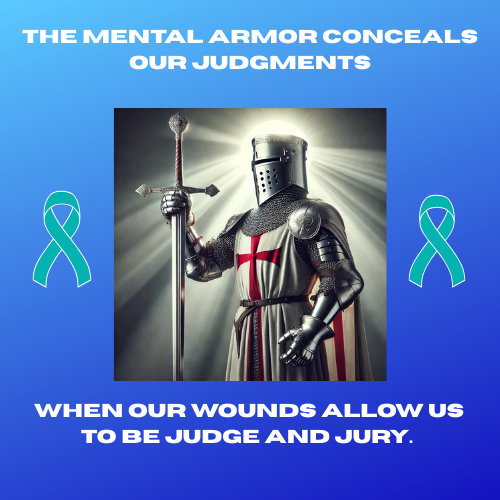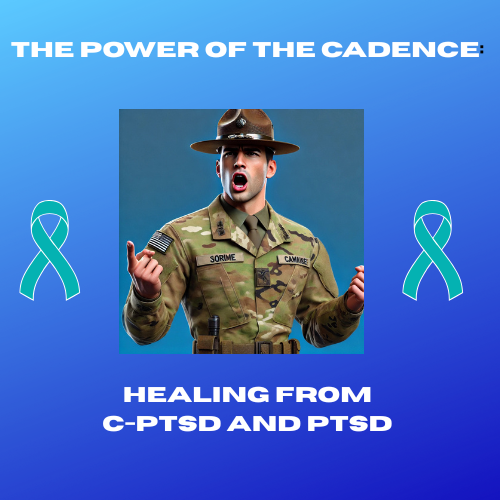The effects on a child raised by narcissist parents.
How Narcissistic Parents Shape Childhood Trauma: Understanding C-PTSD
What fate awaits a child who never receives genuine attention?
Like a flower struggling to grow in the shadow of a towering tree, children of narcissistic parents learn early that emotional sunlight must be earned, never freely given. They stand in empty rooms beside birthday cakes, watching candles flicker with wishes that seem destined never to come true. Over time, their genuine smiles fade into carefully crafted masks designed for survival.
In my journey, I learned that silence and compliance were the keys to making it through each day. My emotions weighed too much for others to bear. I learned to manage or dismiss my desires as minor inconveniences. This invisibility wasn't something I chose; it was imposed upon me, layer by careful layer, until I almost forgot who I was underneath.
What I didn't understand then was that I was developing what psychologists now recognize as complex post-traumatic stress disorder (C-PTSD). This condition emerges not from a single traumatic event, but from prolonged, repeated exposure to emotional abuse and neglect during critical developmental years.
Understanding C-PTSD: The Hidden Wound
Unlike traditional PTSD, which typically results from a specific traumatic incident, C-PTSD develops from chronic, ongoing trauma, particularly during childhood.
It's the psychological equivalent of death by a thousand cuts, where each seemingly minor incident of emotional neglect, manipulation, or abuse compounds into a complex web of symptoms that can persist well into adulthood.
The diagnostic criteria for C-PTSD include all the symptoms of traditional PTSD, flashbacks, hypervigilance, and avoidance, plus three additional clusters of symptoms that uniquely characterize complex trauma:
Emotional Dysregulation: The inability to manage emotions effectively, leading to overwhelming feelings of anger, sadness, or numbness that seem disproportionate to current circumstances.
Negative Self-Concept: A persistent sense of being fundamentally flawed, worthless, or different from others, often accompanied by intense shame and self-blame.
Interpersonal Difficulties: Challenges in forming and maintaining healthy relationships, often swinging between extremes of isolation and desperate attempts to connect.
These symptoms aren't character flaws or signs of weakness, and they're the natural adaptations of a developing mind trying to survive in an environment of chronic emotional threat.
The Weight of Conditional Love
Living with narcissistic parents can be likened to living in a house of mirrors, reflecting only what the parent desires. Children in these environments learn that their worth isn't inherent, something they possess simply by being human, but instead must be measured by their ability to satisfy a parent's insatiable need for admiration and control.
This dynamic creates what trauma specialists call "developmental trauma,” wounds that occur during the crucial years when our sense of self is forming. The child's nervous system wires itself for survival rather than connection, laying the groundwork for C-PTSD symptoms that may not fully surface for years.
Like delicate dancers performing on a precarious stage, these children execute endless routines of people-pleasing while their authentic selves slowly fade into distant memories. Every interaction becomes a performance evaluation. Every mistake becomes evidence of fundamental inadequacy.
Consider Sophie, whose mother possessed the ability to turn even her genuine expressions of love into evidence of her shortcomings. Sophie discovered that love was inherently conditional, perpetually elusive, and contingent on flawless performance. Her true self became a stranger she rarely dared to visit. By adulthood, Sophie struggled with the emotional dysregulation characteristic of C-PTSD, she would swing between overwhelming anxiety about relationships and periods of complete emotional numbness.
The Storm Within: How C-PTSD Manifests
The internal world of someone with C-PTSD is often characterized by chaos masquerading as calm. Beneath a carefully maintained exterior lies a storm of conflicting emotions, fractured self-perception, and a nervous system that never quite learned how to rest.
Emotional flashbacks are perhaps the most misunderstood aspect of C-PTSD. Unlike the vivid, visual flashbacks associated with traditional PTSD, emotional flashbacks manifest as sudden, overwhelming feelings that seem to come from nowhere. The adult survivor might find themselves feeling like a terrified, helpless child in response to minor criticism or perceived rejection, without understanding why their reaction feels so intense.
Hypervigilance becomes a constant companion. The nervous system, trained from childhood to scan for signs of emotional danger, never fully relaxes. Navigating social situations becomes a challenging task. Relationships feel perpetually unstable, even when they're objectively secure.
Toxic shame differs from healthy guilt. While guilt says, "I did something bad," shame whispers, "I am bad." This core belief, often implanted during childhood, becomes the lens through which everything else is viewed.
Daniel learned to watch his father's explosive anger the way sailors watch approaching hurricanes, with careful attention and strategic retreat. He became an expert at emotional disappearing acts, developing what psychologists call "emotional numbing" as a survival mechanism. But beneath his carefully maintained calm exterior lay the emotional dysregulation of C-PTSD: sudden panic attacks, periods of dissociation, and an internal scream for acceptance that followed him well into adulthood.
When the Body Keeps Score: The Neurobiology of C-PTSD
Complex trauma rewires the developing brain. The areas responsible for emotional regulation, memory processing, and self-awareness are the prefrontal cortex and hippocampus. They don't develop properly under conditions of chronic stress. Meanwhile, the amygdala, our brain's alarm system, becomes hyperactive and oversensitive.
This neurobiological reality explains why C-PTSD symptoms can feel so overwhelming and why traditional talk therapy alone isn't always sufficient. The trauma lives in the body as much as the mind, creating physical symptoms that can include:
Chronic fatigue and sleep disturbances
Autoimmune disorders and chronic pain
Digestive issues and eating disorders
Difficulty with emotional and physical intimacy
Substance abuse as a form of self-medication
The nervous system, trained from childhood to maintain constant alertness, struggles to find peace even in genuinely safe environments. Sleep becomes elusive. Relationships feel dangerous. Success feels undeserved. The child who learns to survive by becoming invisible often grows into an adult who struggles to believe they have the right to occupy space in the world.
Yet here's where hope begins to emerge: neuroplasticity, the brain's ability to form new neural pathways, means that healing is possible at any age. The same brain that was conditioned for survival can be retrained for thriving.
The Divine Encounter: Spiritual Healing for Complex Trauma
Sometimes, in our deepest pain, we encounter something that transcends human understanding, a source of healing that addresses not only our symptoms but also our fundamental sense of worth and belonging. For many C-PTSD survivors, this spiritual dimension becomes crucial to their recovery.
Psalm 34:18 offers this promise: "The Lord is close to the brokenhearted and saves those who are crushed in spirit." This isn't about religion as performance or ritual, but about discovering a love that exists without conditions, that sees beyond our masks and loves what it finds there.
My encounter with Jesus was nothing like what I expected. It wasn't formal or ritualistic. Instead, it was intimate, compassionate, and startlingly honest. For the first time, I experienced love that didn't require me to earn it or maintain it through perfect behavior. This divine love began to heal the core wounds of C-PTSD, the deep-seated belief that I was fundamentally unworthy of love and belonging.
The spiritual dimension of healing addresses what trauma specialist Dr. Judith Herman calls the "core experiences of psychological trauma": disconnection, disempowerment, and violation of basic human dignity. Divine love offers reconnection, empowerment through grace, and the restoration of inherent worth.
A Healing Manifesto: Six Steps to Overcome C-PTSD
Recovery from C-PTSD isn't linear, but there are concrete steps that can guide the journey toward wholeness:
1. Acknowledge Your Truth and Understand Your Symptoms. The first step requires tremendous courage: recognizing that your struggles may stem from complex trauma. Learning about C-PTSD can be profoundly validating; suddenly, symptoms that seemed like personal failings reveal themselves as natural responses to an unnatural situation. Your story matters, and your pain has a name.
2. Establish Boundaries and Safety. Healing begins with creating safety in your current life. This means establishing clear boundaries with toxic family members, learning to recognize your emotional triggers, and developing strategies to manage overwhelming feelings. Boundaries aren't walls intended to keep everyone out; they're gates that allow you to control who gets access to your inner world.
3. Seek Trauma-Informed Professional Support. C-PTSD requires specialized treatment approaches. Look for therapists trained in trauma-focused modalities like EMDR (Eye Movement Desensitization and Reprocessing), Somatic Experiencing, or Internal Family Systems therapy. These approaches address both the psychological and physiological aspects of complex trauma.
4. Practice Self-Compassion and Reparenting. Begin treating yourself with the kindness you would offer a dear friend. Many C-PTSD survivors need to learn how to "reparent" themselves, providing the emotional nurturing they never received as children. Replace the harsh inner critic with a voice of understanding and gentle care.
5. Embrace Forgiveness as Freedom. Forgiveness doesn't mean excusing what happened or pretending it didn't hurt. Instead, it means releasing the emotional power that past hurts continue to hold over your present life. This process often takes years and may need to be repeated multiple times. You forgive for your freedom, not for anyone else's comfort.
6. Connect with Divine Love and Spiritual Community. Allow yourself to experience the unconditional love that Jesus offers—love that fills the emotional voids left by inadequate parenting and affirms your worth simply because you exist. Healthy spiritual communities can provide secure attachment relationships that help heal C-PTSD.
The Neuroscience of Hope: How Healing Happens
Modern neuroscience provides previously unknown information about how healing from C-PTSD occurs. Therapeutic interventions and spiritual practices can form new neural pathways, literally rewiring the brain for health rather than survival.
Neuroplasticity refers to the brain's ability to change in response to experiences throughout our entire lives. Healing practices like meditation, prayer, and trauma therapy create new neural networks that can override old patterns of fear and shame.
Secure attachment relationships, whether with therapists, spiritual mentors, or trusted friends, provide the relational healing that complex trauma requires. The nervous system learns to regulate itself through co-regulation with safe individuals.
Mindfulness and somatic practices help integrate the body and mind, addressing the physiological aspects of trauma. Many survivors find that combining traditional therapy with practices like breathwork or contemplative prayer accelerates their healing.
The Path Forward: Integration and Growth
Healing from C-PTSD happens in layers, marked by gentle revelations and small victories that accumulate over time. The journey often involves what therapists call "post-traumatic growth," the development of new capabilities, relationships, and perspectives that emerge from working through trauma.
Survivors often discover
A deeper capacity for empathy and compassion
Increased emotional intelligence and self-awareness
A stronger sense of personal values and authenticity
Enhanced relationships based on genuine connection rather than performance
A profound sense of meaning and purpose, often expressed through helping others
The journey isn't always linear. There will be setbacks and difficult days. But each step toward healing is sacred, each moment of authentic connection a minor miracle.
A Message of Hope for Fellow Survivors
If you recognize yourself in these words, know this: your pain is real, your struggle is seen, and your healing is not only possible but already beginning. C-PTSD may have shaped your past, but it doesn't have to define your future.
Psalm 147:3 promises that God "heals the brokenhearted and binds up their wounds." You are never too broken, never too far gone, never beyond the reach of redemption. Your nervous system can learn to calm down. Your heart can learn to trust. Your spirit can learn to soar.
Jesus doesn't merely save. He restores. He sees beyond your symptoms and your pain to embrace the beautiful soul you were always meant to be. In His eyes, you have always been precious, worthy, and deeply loved. He has never overlooked the ignored child.
If you have felt invisible for most of your life, let this truth sink deep: Jesus sees you completely, understands your pain intimately, and has never once looked away. Your healing matters—not just for you, but for all the other invisible children who desperately need to see that recovery is possible.
If this article resonates with your experience, consider reaching out to trauma-informed therapists who understand both C-PTSD and the spiritual dimensions of healing. Your pain, transformed through grace and professional support, can become a powerful testimony of hope for others still struggling in the shadows.
Resources for C-PTSD Recovery:
International Society for Traumatic Stress Studies (ISTSS)
The Body Keeps the Score by Dr. Bessel van der Kolk
Complex PTSD by Dr. Pete Walker
Trauma-informed therapy directories in your area









